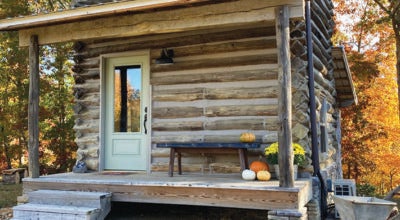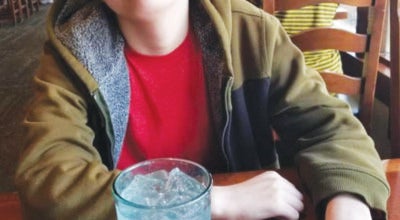The Literary Corner: Renegade Writer’s Guild
Published 9:23 am Thursday, December 12, 2019
|
Getting your Trinity Audio player ready...
|
“Camp Meetings”
By Linda H. Barnette
Before the days of large numbers of churches in the Piedmont section of North Carolina, the tradition of camp meetings arose. People actually left their homes, took supplies, and went to religious services where they stayed for several days, usually about a week, and camped. That explains the name “camp meetings.” These events actually preceded the familiar tent revival meetings in our area not too long in the past.
These gatherings were begun by a Methodist Episcopal minister, Rev. Daniel Asbury, from Halifax, North Carolina, originally from England, who was sent to this area to organize the Methodist circuit. In 1794 he was preaching in Lincoln County where a new church was in the process of being built. So he took the congregation of what would later be Rehobeth Methodist Church outside into the woods where they built an arbor of brushes. At that time preaching services lasted for several days and were the beginning of the so-called camp meetings. Soon after this first one, both Methodists and Presbyterians held these meetings regularly.
Camp meetings were uniquely suited to the agrarian way of life in a frontier area with few established churches and even fewer ministers. Very emotional and evangelical, these gatherings were rural by nature and were always scheduled so as not to interfere with the farming cycle. They were often held in areas that had both woods for shade and privacy as well as a handy water supply. In those days transportation was slow and inefficient, so the folks going to the meetings always planned for several days away from home.
Although the revival style preaching was the main reason for going, people also used these events for socializing with other people. Their lifestyle did not offer many opportunities for socializing, so they also enjoyed that aspect of the meetings. The time away from their daily labors was a welcome break.
The preachers at these services were generally the “fire and brimstone” types, who often worked up a religious fervor in the crowd. As such, these gatherings were large influences on church membership, especially after the Civil War when the men had returned home.
In the rural South religion has always been crucial, and nothing was more important than the camp meetings in establishing religion as a major part of life in this area.
There were several large meeting places in the North Carolina Piedmont: Rehobeth in Lincoln County; Shepherd’s Crossroads in Iredell County; Wesley Chapel in Catawba County; the Center Arbor and Smith Grove Methodist in Davie County; and the largest of all, Rock Springs in Denver, North Carolina, also in Lincoln County.
Rock Springs is the oldest continually operating camp in this state. It grew out of that first meeting held by Rev. Asbury at Rehobeth Methodist Church in 1794 and is still a huge meeting. The original wood arbor is still used, and cabins have been constructed for visitors to stay in during the two weeks in August each year that the meetings are ongoing. Many of the people are descendants of those people who began going to the services years ago.
My husband, John, who grew up in Lincoln County, recalls going to Rock Springs as a child with his parents. He remembers that several preachers would take turns preaching, and that there were also singings. Most of all, he remembers the food and that the meetings were social gatherings where the ladies enjoyed showing off their baked goods!!
In any case, this is an interesting part of our history and one that I did not know about until I recently read about the history of Center Methodist Church, where my Dwiggins ancestors were founding members who now rest in the beautiful cemetery there.
“Stay Strong”
By David R. Moore
I drove my friend to Wake Forest Baptist Hospital for an appointment at the cancer center. We entered Parking Lot C and eventually found an empty parking space. I had never been there before, and my friend was able to navigate me through the correct corridors and elevators. Eventually we arrived at Oncology on Floor 3.
We were greeted by an electronic kiosk to obtain an assigned number. Are you here to see a doctor or for lab work? My friend touched the screen indicating the need to see a doctor, and the machine spit out number A114. The waiting areas were mostly filled. My friend located a section where more vacant seating was available. His immune system was weakened, and he did not want to sit near anyone who might have a cough.
Large TV monitors hung from the various walls indicating which numbers had been called: A73 for Lab, B340 for Vitals, A97 for Window 5, and A101 for Window 7. Every few minutes a voice over the intercom would make an announcement with a new number and its destination. These numbers were added to the list displayed on the monitors and earlier numbers removed.
Eventually my friend’s number was called to Window 3. After a few minutes, he returned wearing a hospital bracelet and a clip-on badge that we reasoned was some sort of tracking device. Perhaps in the past they had problems of losing patients and decided to institute a tracking system.
My friend told me a blood draw was to be done first and then his procedure. He was not sure how long I would have to wait. The voice over the intercom announced his number for Lab. I watched my friend as he approached the door indicating “Lab”. The door opened slightly with someone greeting him as he disappeared into the room. The door was solid wood and had a combination lock above the handle. I found it fascinating to watch as numbers were called for the Lab. A patient approached the door, and a person behind the door opened it as if by magic before the patient even needed to knock. I guessed the tracking system was working.
My friend returned within a short period of time. The blood was drawn in a quick and efficient manner. A medical person soon came into our area and called his name. With his escort, my friend disappeared behind the large double doors guarding the ward.
While I waited, a hospital volunteer provided assistance at the ticket kiosk and guidance on where patients needed to go. A grandfather was continually maneuvering a baby carriage through the seating areas keeping a young infant entertained. After a length of time, the grandmother took her turn pushing the carriage. The smiling infant was unaware why his mother was on that floor.
On the far side of the room, a middle aged woman escorted her father back from the ward area to a seat next to his wife. The daughter then sat next to her mother. The mother paid full attention as the daughter spoke in a voice audible only to her. The father did not watch but looked away in his own thoughts.
A couple was standing to the side of the room with the young man’s back to me. He stood erect and his arms hung down his sides. His young wife or perhaps girlfriend pressed against him with her hand stroking the back of his head as her head rested on his shoulder. Her eyes teared as she whispered into his ear. His arms stayed by his sides.
Every person in that waiting area had their own story. I saw in their faces that these patients were not defeated. Their jaws were set with steady eyes and determination in facing the future. From my perspective it was their loved ones who were suffering.
I wished both the patients and their loved ones to look out the windows overlooking Cloverdale Avenue and see the hand-made banner displayed on the roof of the Shell station saying “Stay Strong.”
“All That Sparkles”
By Stephanie Williams Dean
When walking through the hospital’s main entrances, I was captivated by the razzle and dazzle of the season. The two gift shops were decked out with festive holiday decorations, and each one featured a lighted tree that bedazzled all those who looked upon it. Generously adorned with sparkling lights, shiny balls, metal signs, fancy ribbons, and festooning sprays of flowers, the trees looked like they came out of a Southern Living magazine.
As I walked through the halls, Christmas carols from the black baby grand player piano filled the area. Atop this magnificent instrument was stood a tall vase filled with holiday flowers that festooned out and upward, providing any onlooker with another dose of holiday sparkle.
I love sparkle – actually anything that lights up and shines. But as I walked through the halls of the hospital, I reminded myself that every piece of holiday sparkle in those halls couldn’t begin to compare to the sparkle in a person’s eyes when you take your time to pay them a visit.
Confined to the hospital over the holidays adds to feelings of sadness and loss during that time. Receiving a diagnosis of pancreatic cancer, facing a major surgery, being discharged to a nursing home instead of going home, suffering a stroke and no longer being able to ambulate independently can be catastrophic in nature to patients.
My heart is filled with people who are suffering at this time. Meanwhile, I try to plan a small Christmas party at home as a small way of thanking friends for the blessing of their friendship throughout the year. But, I’m stumbling trying to make room for myself. It’s so much easier to care about and be there for other people.
I spoke to Randy Hillman, chaplain, about it, and he reminded me how important it is for those who do much for others to take time for themselves. Later that same day, a patient asked if she could pray for me – that might be the first time a patient has done that. She prayed for me, referring to me as a kingdom leader – one blessed to listen, strong enough to cope and sometimes burdened by the weight of the world.
So, I wanted to share with those of you who do much for others, please make and take time this holiday season for yourself. By taking respite, sharing quiet moments with God, taking time to refill of the Holy Spirit, you will be equipped to continue to share the light of this world with those who live in darkness or share the gift of your time with those who are suffering. You might be their only light out of darkness. Sparkle on.
• For more information on Renegade Writers Guild, visit www.renegadewritersguild.wordpress.com.
• Submit a favorite memory of life in Davie County. Story should be typed and not more than 250 words. Please include your name and phone number or email address. RWG retains reprint rights. Email to lhb1@yadtel.net.





